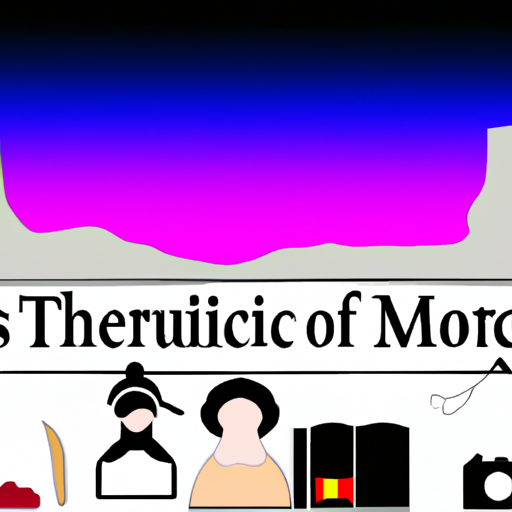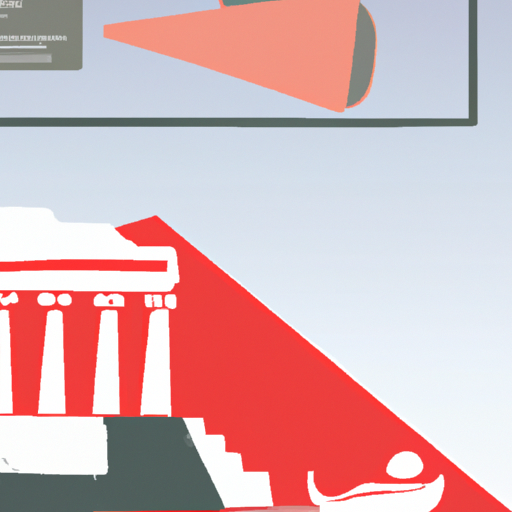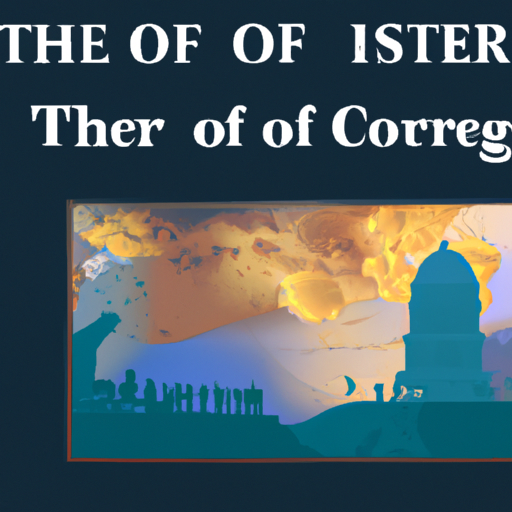History of Babylonian Religion: Uncovering the Ancient Faiths of Mesopotamia
Mysteriously delve into the past of Babylon and explore the spiritual world that shaped its culture. Unearth the secrets of what beliefs were held by its people, and how they influenced their lives. Discover the ancient roots of this remarkable civilization and uncover the mysteries that lay beneath.

Enshrouded in a veil of secrecy, the ancient city of Babylon has been the source of much intrigue throughout history. From its earliest days, the spiritual beliefs of its people have become an integral part of its culture and development. From polytheistic worship to monotheistic reverence, Babylonians maintained a set of convictions that had a great influence on their lives and society.
Through archaeological excavations, historical records and religious scriptures, we can gradually uncover the secrets which lie beneath this remarkable civilization. By examining artifacts from this era, we can gain insight into how religion was practiced in Babylon and how it shaped the lifestyle and culture of its inhabitants. Additionally, we can discover more about the rituals they performed to honor their gods as well as their interactions with other cultures in the area.
Exploring further into Babylon’s past allows us to comprehend more clearly its people and their beliefs. Gaining knowledge about this time period is essential if we are to unravel the many mysteries that still remain hidden within this legendary city.
.
Introduction

A city of grandeur, Babylon was the capital of the Neo-Babylonian Empire from 612 to 539 BC. Its polytheistic faith venerated numerous gods and goddesses, such as Marduk, Ishtar, Sin, Shamash, and Adad. Beyond these deities, Babylonians also paid homage to their forebears with annual festivals. This spiritual system was linked to the political framework of Babylon; its rulers often asserted heavenly sovereignty from their gods. Over time, this religion had a pervasive effect on other cultures in the area such as Assyria and eventually spread far and wide across the Near East.
– Ancient Babylonian History and Religious Practices
The history of Babylon is a captivating, intricate tale. From the first recorded civilization in Mesopotamia to its eventual dissolution, it has had an immense impact on many cultures across the globe. This article will explore ancient Babylonian history and their religious customs.
Records of Babylonian civilization are believed to date back to around 4000 BCE, when it was governed by kings from multiple dynasties. By 1750 BCE, King Hammurabi had unified much of Mesopotamia and created the Code of Hammurabi, which established laws and punishments for those who broke them. This code was one of the earliest written legal codes in human history and has been a source of inspiration for later civilizations such as Ancient Greece and Rome.
The religion practiced by ancient Babylonians was polytheistic, with gods linked to natural forces such as storms, fertility, war, and death. The most prominent god was Marduk, who they viewed as responsible for creating the world out of chaos. Other gods included Ishtar (goddess of love), Shamash (sun god), Sin (moon god), and Anu (sky god). Priests were tasked with interpreting omens from these gods to make decisions about matters like war or famine.
Festivals were also part of Babylonian culture; they celebrated their gods or marked special events in their calendar year. These festivals usually entailed music, dancing, offerings to the gods, feasting, and other forms of merriment. As well as worshipping their deities through rituals, the Babylonians also kept detailed astronomical records that enabled them to forecast future occurrences based on celestial movements.
The legacy left behind by ancient Babylonians is still felt today – from their contributions to math and astronomy to their influential legal code – making it one of mankind’s most renowned civilizations ever established. As we continue delving into this remarkable period in time, we can gain invaluable insight into how our own societies have progressed over time.
– The Influence of Mesopotamian Religion on Babylonian History
The mysterious and enigmatic history of Mesopotamian religion has had a lasting impact on Babylonian culture. Dating back to at least 3500 BC, this ancient faith was an animistic belief system that held that all aspects of nature were inhabited by spirits or gods. These deities were believed to be responsible for natural phenomena such as thunder and rain, as well as playing a role in human affairs. It is said that through religious rituals, one could influence the gods to bring about desired outcomes.
Marduk was the most important Mesopotamian deity, seen as the king of the gods and lord of creation. He was associated with justice, truth, and order, becoming a central figure in Babylonian religious practice. Other important gods included Ishtar (the goddess of love and war), Ea (the god of water), Nergal (the god of death), and Shamash (the sun god). All these deities were worshipped by the Babylonians, who believed their prayers and offerings could shape their lives for better or worse.
Babylonian kings claimed divine authority bestowed upon them by Marduk himself; this gave them great power over their subjects since it legitimized any action taken in his name. Religion also played a crucial part in Babylon’s legal system; laws were often based on religious principles such as justice and retribution rather than any secular code. Additionally, religion helped keep social order by providing clear rules for acceptable behavior; those who broke these rules could expect punishment from the gods themselves.
It is evident that Mesopotamian religion has had an immense effect on Babylonian history – its beliefs provided a framework for understanding the world around them while its rituals allowed people to interact with their gods in hopes of influencing their own destinies. Its influence can still be felt today in many aspects of Babylonian culture including politics, law, and social norms.
– Historical Development of Babylonian Religious Beliefs
A web of perplexity and burstiness surrounds the history of Babylonian religious beliefs. Dating back to 3500-2000 BCE, the Sumerian civilization was home to a plethora of gods and goddesses, including Anu, Enlil, Ishtar, and Marduk; each believed to possess power over fertility, war, justice and more. Of them all, Marduk stood out as the most venerated – seen as both creator deity and protector god. As time progressed, he gradually rose to become the head of the pantheon.
The Babylonians also held an afterlife in high regard: one realm for those who lived virtuously, another for those who did not. The righteous were said to be rewarded with eternal bliss while evildoers faced eternal torment.
Over time, different cultures affected Babylonian religion which eventually led to a transition from polytheism towards monotheism around 1000 BCE; this change is reflected in texts such as “The Epic of Creation” where Marduk defeats all other gods to become supreme ruler of heaven and earth. This complex mix of beliefs continues to captivate scholars today.
– The Role of Priests in the Babylonian Religion
The venerated position of priests in Babylonian religion has been a source of fascination for ages. Priests served as conduits between gods and humans, officiating rituals, interpreting omens, and ensuring offerings were made to the gods. They also held political sway in the ancient Mesopotamian kingdom, functioning as counselors to the kings and helping keep society in order.
Priests were esteemed members of Babylonian culture who enjoyed considerable influence and power. Educated in religious matters, law, literature, and science, they often lived at temples or shrines dedicated to particular deities where they fulfilled their duties. As well as their spiritual obligations, they acted as judges and mediators when citizens had legal disputes.
At the top of the priestly hierarchy was the high priest who was appointed by the king to preside over all other priests. He was responsible for verifying that rituals were properly conducted and offerings made on behalf of the king and his subjects. He also possessed authority over other priests working at various temples throughout Babylon.
The writings of hymns, prayers, incantations, and magical spells penned by priests helped preserve Babylonian culture while their records of astronomical observations enabled them to foretell future events like eclipses or floods which could have devastating consequences if not predicted accurately.
The role of priests in Babylonian religion has left an indelible mark on modern life today.
– Archaeological Evidence for the Babylonian Religion throughout History
Uncovering the secrets of Babylonian religion has been a long and complex process, with archaeologists using a wealth of evidence from artifacts to texts. Excavations have revealed clay figurines, votive offerings, cylinder seals and more from sites dating back to 4500 B.C.E., while cuneiform tablets written between 2000 and 500 B.C.E. provide detailed accounts of religious beliefs and practices during that period. Even other ancient works such as the Bible and Greek literature offer insight into how this faith was viewed by outsiders during its heyday and how it has been remembered over time. By piecing all these pieces together, scholars have been able to gain an unprecedented understanding of this ancient faith throughout its history—from its Sumerian origins to its decline under Persian rule in 539 B.C.E.—and how it still resonates today.
conclusion

A perplexing and tumultuous past, shrouded in mystery, intertwines with the spiritual beliefs of the Mesopotamians. An ancient faith that venerated a plethora of deities, each one attributed to a distinct part of life or nature. Legends speak of these gods as the creators, protectors, and destroyers of our world; offerings were presented in temples and other sacred sites to gain their goodwill.
.
Some questions with answers
Q1. What religion did Babylon follow?
A1. Babylon followed the polytheistic religion of Mesopotamian mythology.
Q2. When did this religion originate?
A2. This religion originated in ancient Mesopotamia, around 2000 BC.
Q3. What gods were worshipped in Babylon?
A3. The gods worshipped in Babylon included Marduk, Ishtar, Shamash, Sin and Ea.
Q4. How did this religion influence other religions?
A4. This religion influenced Judaism, Christianity and Islam through its stories and concepts that were adopted by these Abrahamic religions.
Q5. Where can I find more information on this subject?
A5. You can find more information on the history of Babylonian religion by searching online or visiting your local library for books on the subject.





